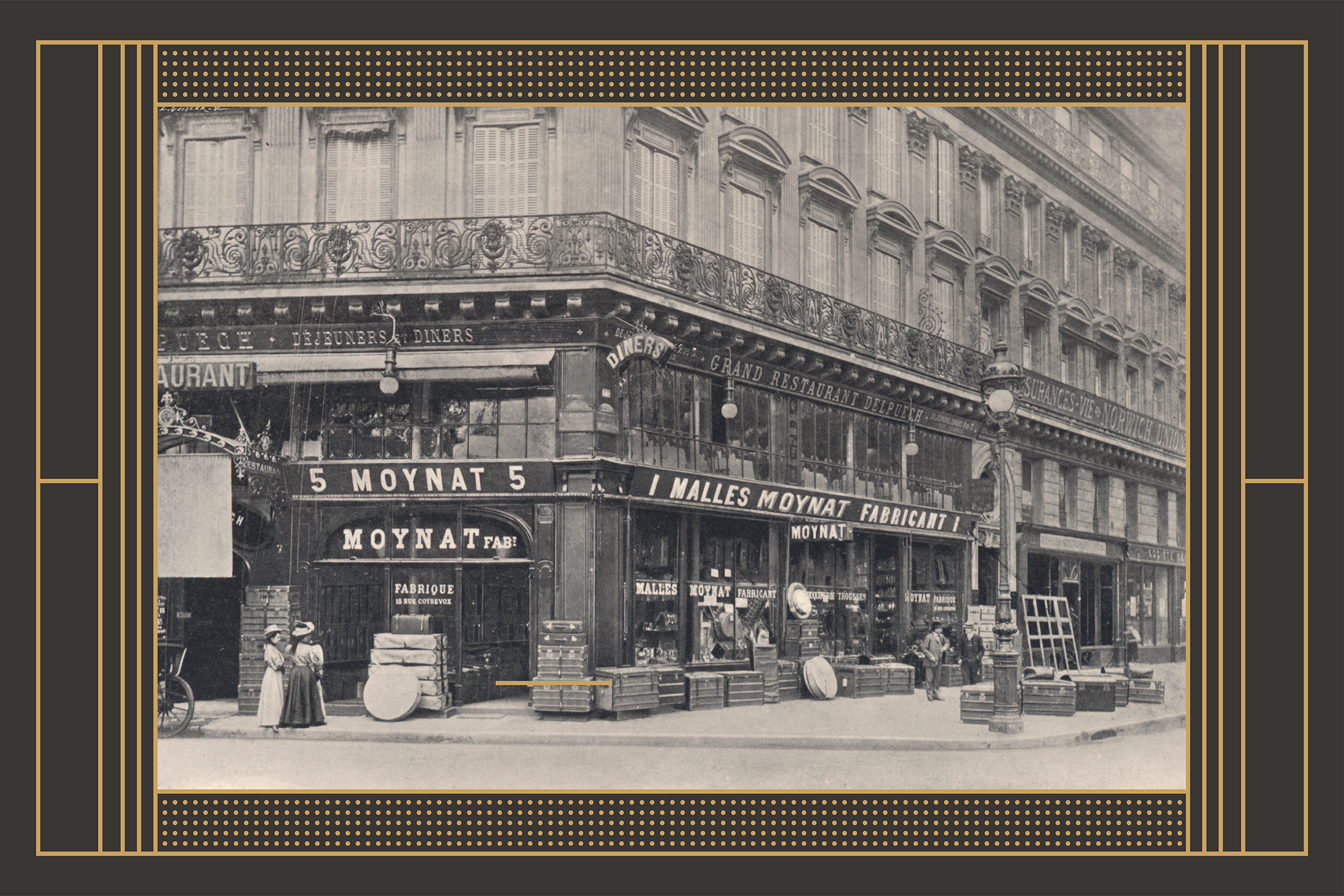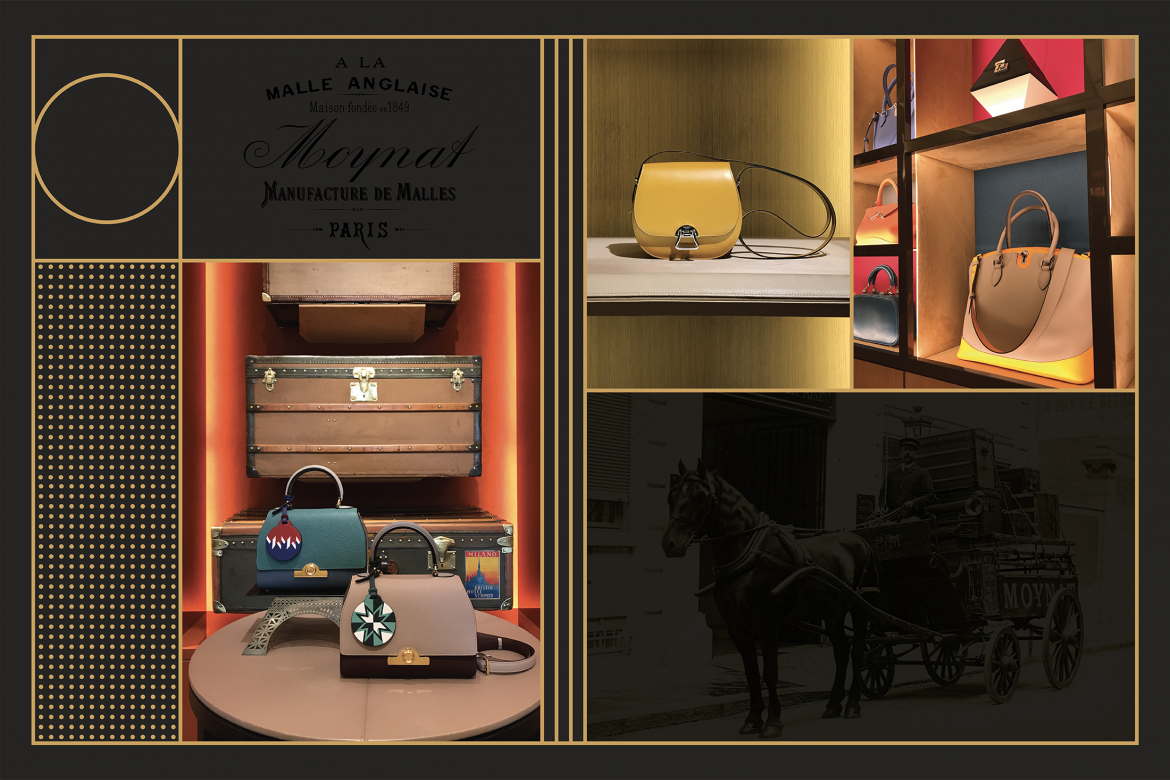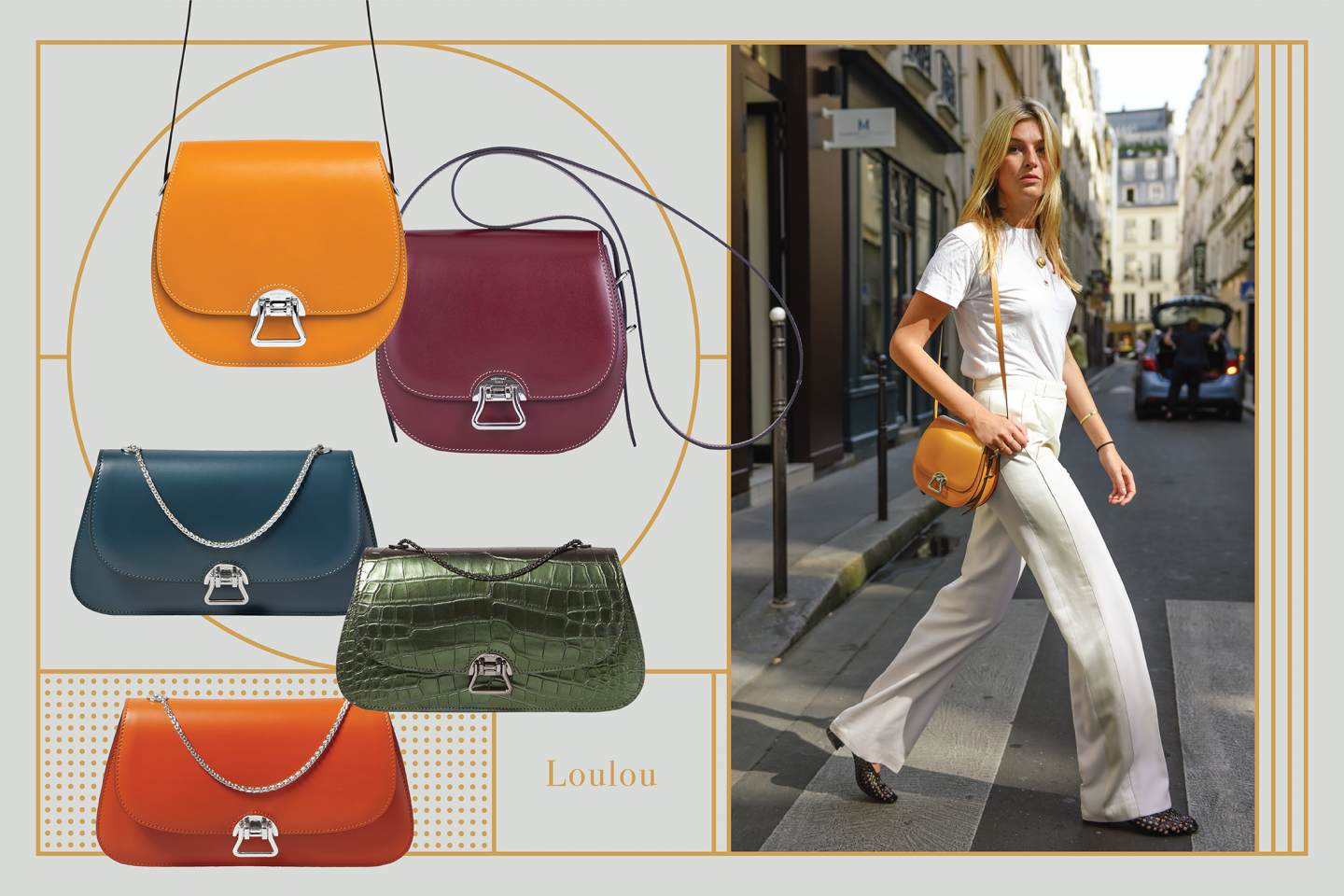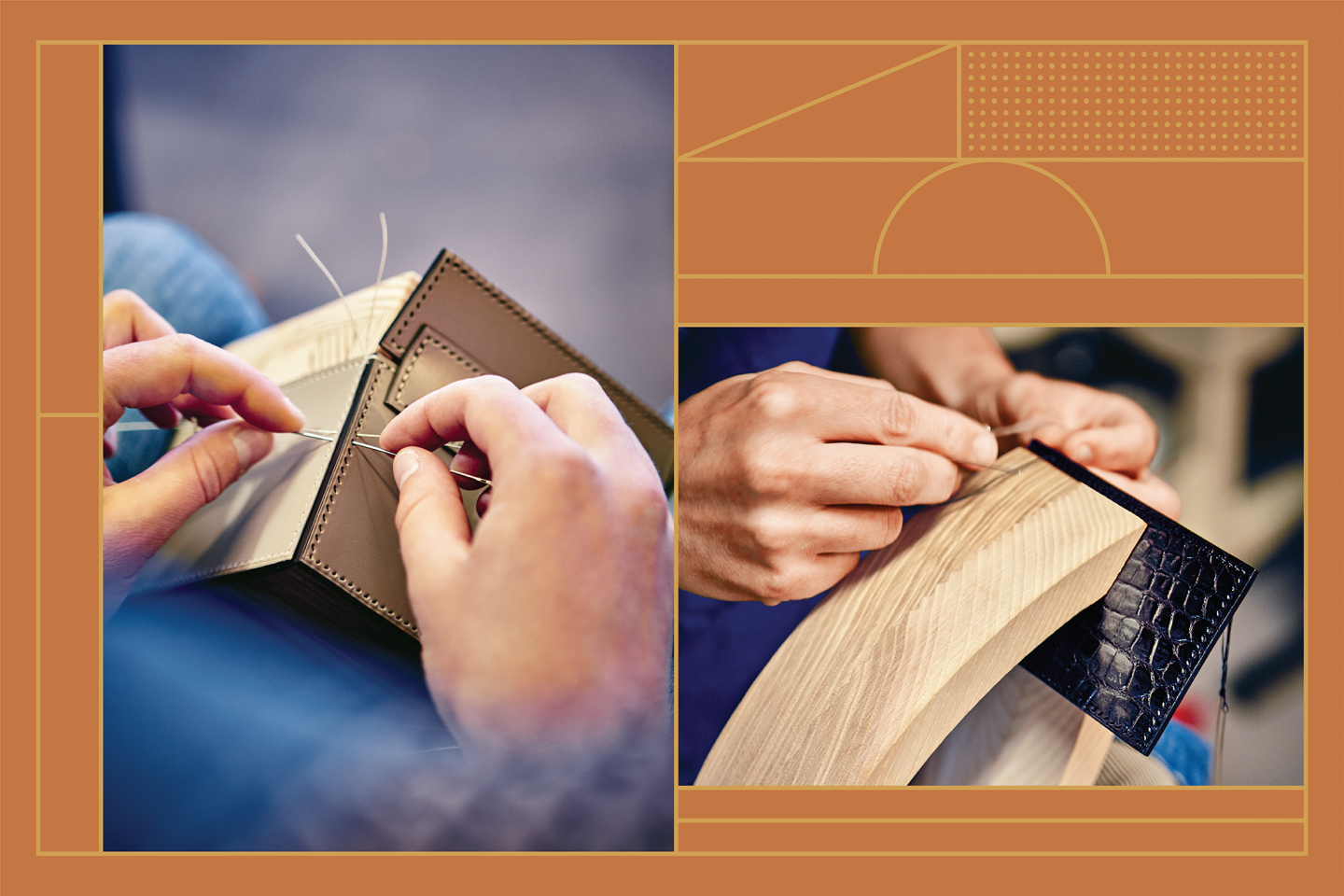An exploration of the French brand’s history and inspired creations.

If you lived in late 19th century Paris and needed a good trunk for a road trip, there was one place you would know to look: Showroom Moynat, which occupied the prime location of No. 1, Avenue de l’Opéra.
First founded in 1849 by Pauline Moynat, the only female trunk maker of her time, along with husband-and-wife-duo Octavie and François Coulembier, Moynat was a pioneer in automobile luggage whose fine made-to-measure trunks were much sought after by well-heeled travellers.
Famed for their expertise in leather craft and lauded for their originality, Maison Moynat was the first to use gutta-percha (a kind of vegetal gum) waterproofing on their luggage, and introduced innovations such as the “English Trunk”, also known as the Moynat Trunk, a lightweight yet sturdy wicker frame trunk; and Limousine trunks which had arched bottoms that sat snugly atop the car roof.
The success of Moynat continued into the 20th century, as the luggage maker continued to register numerous patents and win prestigious awards for their inventions.

In 1976, Moynat’s Paris boutique closed. Fortunately, the French brand’s story did not end there. In 2011, Moynat was relaunched, marking a bold new chapter in its rich history. Since then, Moynat’s Creative Director Ramesh Nair has worked ceaselessly to both recover the House’s lost codes and introduce fresh novelties. One of Nair’s early and ongoing projects has been to acquire vintage bags and trunks for the archive, articles that bear testament to the brand’s heritage of innovation and savoir faire. Icons that were highlighted during Moynat’s 2011 relaunch include the ladies’ handbags or “mignon” (which were first made in chamois leather in 1878) and the shoebag, which was created in 1879.
To this day, Maison Moynat has continued to refer to Moynat boutiques as “showrooms”, just as its founder Pauline Moynat did. Iconic vintage trunks form a discrete yet powerful backdrop to Nair’s contemporary designs.
More silhouette than logo
Artisanal savoir-faire, exceptional materials and refined hardware may be hallmarks of the brand, but it is Moynat’s distinctive silhouettes that set it apart from other luxury labels. Indeed, silhouettes have always been key for the brand whose trunks and bags come in numerous shapes and sizes.
170 years since the brand’s inception, the Maison now has in its stable an impressive line-up of bags of various striking shapes, each complete with unique, well-conceived locks and closures for each style (as a case in point, let’s have a closer look at the closures on my mini vanity, and mini Gabrielle, and that of the iconic Réjane).
Craft and Icons
I am excited to have had the opportunity to watch the making of the mini vanity and Réjane, as well as that of leather marquetry when I visited the Paris Atelier at its beautiful new home. This was a real privilege as the new Atelier (as was the previous one I visited in 2018) remains an exclusive studio that is not open to public.
The Art of Leather Marquetry
Leather marquetry is a delicate, specialised process where individual pieces of leather are cut and placed together seamlessly to create a design motif. Moynat’s artisans do this with such a high level of finesse that one cannot spot the individual pieces once they are assembled together. Not only are the joints invisible to the naked eye, but the motif is also smooth and flat to the touch – so much so that one may think the design is printed on.
Mini Vanity
There is nothing quite as elegant and unconventional as this miniature cubic bag. Today, just as more than a century ago, this cubic trunk is handcrafted, using a technique known as angle stitching, where two sides of a trunk, edges already painted and waxed, are held at a perfect right angle while being stitched with a single linen thread and two needles.
Réjane
Named after the celebrated French actress Gabrielle Réjane, this well-proportioned bag is both handsome and beautiful, with its gentle curves, clean lines, and rounded Art Deco clasp. Each Réjane requires 20 hours of handiwork by a single artisan.
These are but just two of my favourite icons of House Moynat. I look forward to journeying on with the many beautiful styles by Moynat, as Nair continues to chart the legacy brand’s milestones and build on its cornerstones of artistry, innovation, and aesthetics.

Images courtesy of Moynat and author, artwork by Curatedition. All rights reserved.






















